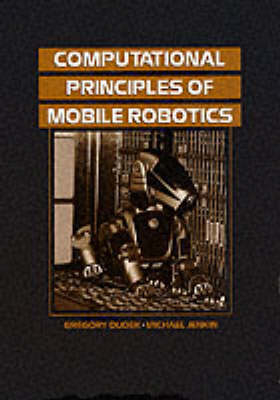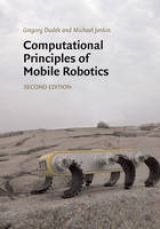
Computational Principles of Mobile Robotics
Seiten
2000
Cambridge University Press (Verlag)
978-0-521-56876-0 (ISBN)
Cambridge University Press (Verlag)
978-0-521-56876-0 (ISBN)
- Titel erscheint in neuer Auflage
- Artikel merken
Zu diesem Artikel existiert eine Nachauflage
This book covers the computational methods of programming involved in designing the locomotive, sensing and reasoning systems that enable a robot to perform tasks that involve motion and behavior. It deals with the problems of sensing, navigation, position estimation, and exploration. It illustrates key technologies of current and historical significance.
This is a textbook for advanced undergraduate and graduate students in the field of mobile robotics. Emphasising computation and algorithms, the authors address a range of strategies for enabling robots to perform tasks that involve motion and behavior. The book is divided into three major sections: locomotion, sensing, and reasoning. It concentrates on wheeled and legged mobile robots, but discusses a variety of other propulsion systems. Kinematic models are developed for many of the more common locomotive strategies. It presents algorithms for both visual and nonvisual sensor technologies, including sonar, vision, and laser scanners. In the section on reasoning, the authors offer a thorough examination of planning and the issues related to spatial representation. They emphasize the problems of navigation, pose estimation, and autonomous exploration. The book is a comprehensive treatment of the field, offering a discussion of state-of-the art methods with illustrations of key technologies.
This is a textbook for advanced undergraduate and graduate students in the field of mobile robotics. Emphasising computation and algorithms, the authors address a range of strategies for enabling robots to perform tasks that involve motion and behavior. The book is divided into three major sections: locomotion, sensing, and reasoning. It concentrates on wheeled and legged mobile robots, but discusses a variety of other propulsion systems. Kinematic models are developed for many of the more common locomotive strategies. It presents algorithms for both visual and nonvisual sensor technologies, including sonar, vision, and laser scanners. In the section on reasoning, the authors offer a thorough examination of planning and the issues related to spatial representation. They emphasize the problems of navigation, pose estimation, and autonomous exploration. The book is a comprehensive treatment of the field, offering a discussion of state-of-the art methods with illustrations of key technologies.
1. Overview and motivation; Part I. Locomotion and Perception: 2. Mobile robot hardware; 3. Non-visual sensors and algorithms; 4. Visual sensors and algorithms; Part II. Representation and Planning: 5. Representing and reasoning about space; 6. Operating environment; 7. Pose maintenance; 8. Maps and related tasks; 9. Practical mobile robot tasks; 10. The future of mobile robotics.
| Erscheint lt. Verlag | 28.2.2000 |
|---|---|
| Zusatzinfo | Worked examples or Exercises; 1 Tables, unspecified; 64 Halftones, unspecified; 75 Line drawings, unspecified |
| Verlagsort | Cambridge |
| Sprache | englisch |
| Maße | 179 x 254 mm |
| Gewicht | 550 g |
| Themenwelt | Informatik ► Theorie / Studium ► Künstliche Intelligenz / Robotik |
| ISBN-10 | 0-521-56876-5 / 0521568765 |
| ISBN-13 | 978-0-521-56876-0 / 9780521568760 |
| Zustand | Neuware |
| Informationen gemäß Produktsicherheitsverordnung (GPSR) | |
| Haben Sie eine Frage zum Produkt? |
Mehr entdecken
aus dem Bereich
aus dem Bereich
Buch | Softcover (2024)
REDLINE (Verlag)
20,00 €
Eine kurze Geschichte der Informationsnetzwerke von der Steinzeit bis …
Buch | Hardcover (2024)
Penguin (Verlag)
28,00 €



